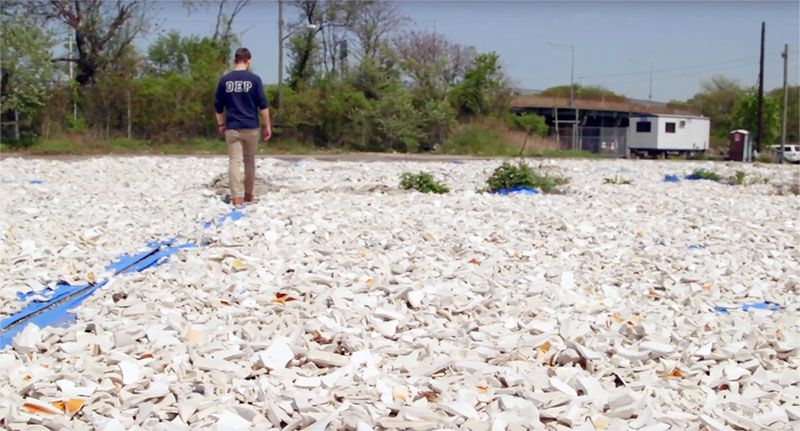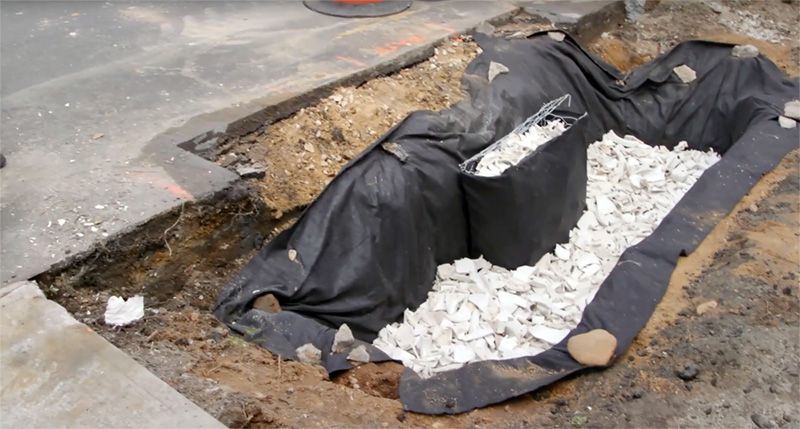NYC’s Forgotten ‘War on Christmas Trees’
Discover how an obscure holiday crackdown affects festive street vendors today!


In an ongoing mission to make New York City a more sustainable place to live, the NYC Department of Education has successfully partnered with the Department of Environmental Protection to retrofit inefficient bathroom fixtures across schools in all five boroughs. The “Toilet Recycling Project,” detailed in the video above, replaced approximately 5,000 porcelain potties, which were crushed and used to construct an oyster reef in Jamaica Bay, as well as bioswales that collect stormwater in the city.

Photo courtesy Department of Environmental Protection + NYC Department of Education
The DEP provided the funding for the initiative, which had a goal of retrofitting 500 New York City school buildings — an ambitious endeavor considering the fact that New York City is home to the largest school system in the United States with 1.1 million students and 1,300 facilities (many of which were constructed before the mid-1990s). According to the video, the city could eventually save four million gallons of water per day by removing 30,000 old toilets from Department of Education facilities alone and replacing them with more water-efficient fixtures.
The idea to repurpose the toilets as a potential oyster bed came from John McLaughlin, the Managing Director of the Office of Ecosystem Services, who noted that porcelain could be used as a base for a reef in Jamaica Bay (much like how the former Fountain Avenue Landfill was turned into a nature preserve). In preparation for the project, the toilets were power-washed and smashed into pieces just the right size.
“There was a lot of logistical issues that we had to make sure that we delivering the exact product for constructing an oyster reef,” said Ben Huff, a Project Manager at the Department of Environmental Protection. “It’s not just that you can smash a toilet and throw it in the bay; we had to make sure that there were no metal or plastic parts on the toilets, and we really wanted to make sure that the porcelain was as clean as possible.”

Construction of a bioswale using porcelain. Photo courtesy Department of Environmental Protection + NYC Department of Education
Once enough porcelain was collected for the reef, DEP also sought out another use for the leftover material: the porcelain was again recycled and used as a replacement for crushed stone, which traditionally serves as the base substrate for bioswales — or planted areas in the sidewalk that bring in stormwater along the curb when it rains. Bioswales play an important role in capturing, filtering and storing rain runoff, allowing the water to infiltrate the ground naturally and helping to prevent flooding and erosion.
By connecting partners across the city, the project was able to further its goals of sustainability by innovatively utilizing “the excess from one program” for adaptive reuse in another.
Next, check out The Tragic History of New York City Oysters and see an Exclusive Video: New York At Its Core Exhibit Puts Spotlight on NYC’s Oyster Population.
Subscribe to our newsletter